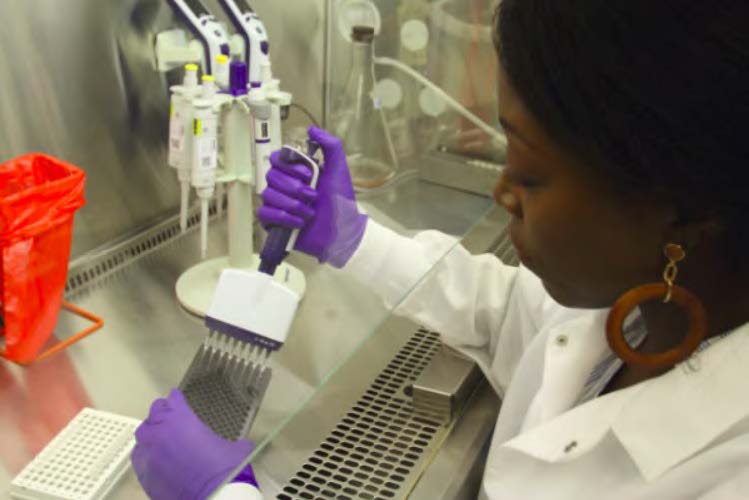Guidance prepared on how to use bioanalytical assays to screen for contaminants

SCCWRP has partnered with the National Water Research Institute (NWRI) to co-author guidance for California’s water recycling community on how to incorporate bioanalytical screening technology into routine water-quality monitoring.
The guidance, developed by a seven-member NWRI panel that includes SCCWRP, will offer best-practice recommendations for using bioanalytical cell assays to screen certain types of recycled water for bioactive contaminants. The guidance is expected to be published as a technical report by the end of November.
The State Water Board last year adopted a policy amendment requiring bioanalytical screenings to be incorporated into monitoring of recycled water for potable reuse. During a three-year trial period that starts in 2020, water recycling agencies in California will screen for bioactive contaminants using two types of bioanalytical assays – the estrogen receptor assay and the aryl hydrocarbon receptor assay.
SCCWRP and its partners have spent the past decade adapting these assays to serve as a first line of defense for screening water bodies for bioactive contaminants. The estrogen and the aryl hydrocarbon receptor assays are designed to screen for hundreds of chemicals that trigger a common cellular-level response.
Bioanalytical screening technology, which was originally adapted from the pharmaceutical and food-safety industries, has the potential to provide a rapid, cost-effective approach to comprehensively screen water bodies for major classes of bioactive contaminants that pose potential health risks to humans and wildlife.
California is the first state in the nation to apply this technology to water-quality management. SCCWRP and its partners envision bioanalytical screening serving as a complement to existing, targeted chemical screening efforts.
The bioanalytical screening guidance document was coauthored over the past few months by the seven-member Bioanalytical Implementation Advisory Group, which includes SCCWRP’s Dr. Alvina Mehinto.
The panel’s guidance, which already has been reviewed by the State Water Board, is expected to inform water recycling agencies’ efforts to develop standard operating procedures and a quality assurance plan for conducting routine screening.
The guidance document is just one of the ways that SCCWRP has been working to transfer bioanalytical screening technology into routine use by the water-quality management community.
SCCWRP also has hosted meetings that brought together cell assay vendors, consultants and the end-user community to discuss how to meet the new State requirements.
Meanwhile, SCCWRP will host a series of laboratory trainings in the coming months to ensure SCCWRP member agencies are proficient in running the assays and analyzing the data.
For more information, contact Dr. Alvina Mehinto.
More news related to: Bioanalytical Cell Screening Assays, Emerging Contaminants, Top News